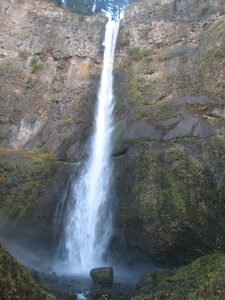Tundra swans, cygnus columbianus, are often confused with trumpeter swans because they are very similar in appearance. They measure 3.9 to 4.8 feet (1.2 to 1.5 meters) in length and have a wingspan of 5.5 feet (1.7 meters). They weigh 8.4 to 23.1 pounds (3.8 to 10.5 kilograms), with males typically being larger than females. Tundra swans are mostly white in color with their heads and necks usually a rusty color. The legs, feet and bill are black with yellow spots at the base of the bill. They are easily distinguished from their trumpeter swan cousins by their calls, which are high-pitched like those of snow geese. Trumpeter swan calls, however, have been likened to that of a French horn.
Tundra swans can be found in Europe, North America, Asia and Africa. They are migratory birds and make two long flights every year. They prefer to inhabit tundra lakes, ponds, rivers and shallow estuaries depending on what time of year it is. Tundra swans are commendable swimmers and will take flight by clattering across the water while they beat their wings. They will often remain in large groups called flocks unless they are on breeding grounds. A breeding pair will make their nests out of sedges, lichens, grasses, moss and will line them with a little down.
The diet of tundra swans consists of aquatic plants, seeds, roots, tubers, mollusks, arthropods and grains. They gather these underwater delicacies by dipping their heads under water and plucking them out of the ground. In fact, the rusty color on their necks is caused by the ferrous minerals that tundra swans encounter in marsh soils while they are feeding. Predators that they protect their nests from include creatures such as foxes, gulls, jaegers and weasels.
It is believed that tundra swans pair and mate for life. In fact, they may pair up almost a full year before they breed at all. After breeding, females will lay around four or five eggs and then incubate them for about 32 days while the males guard the nests. For tundra swans, climate plays a vital role in the outcome of whether their eggs hatch or not. If winter drags on for too long, then the majority of eggs won’t hatch, causing significant reproductive problems. After the eggs hatch, they are protected from predators and the cold by their parents, who can get so nasty when agitated that they can fend off foxes and jaegers. Fighting off predators is not preferred, however, and tundra swans would rather keep their nests hidden from such dangers. If the young ones can survive long enough, then they can live to be up to 20 years old in the wild.
Tundra swans are not an endangered species and may in fact be increasing in population. They are allowed to be hunted in certain areas, although such hunting is closely monitored. Hopefully, tundra swans can continue to thrive as they have been and avoid ever having to face the threat of extinction. After all, such a unique bird deserves to live and prosper far into the future.
Works Cited
“Tundra Swan” 22 February 2011
“Tundra Swan” 22 February 2011
“Tundra Swan” 22 February 2011

